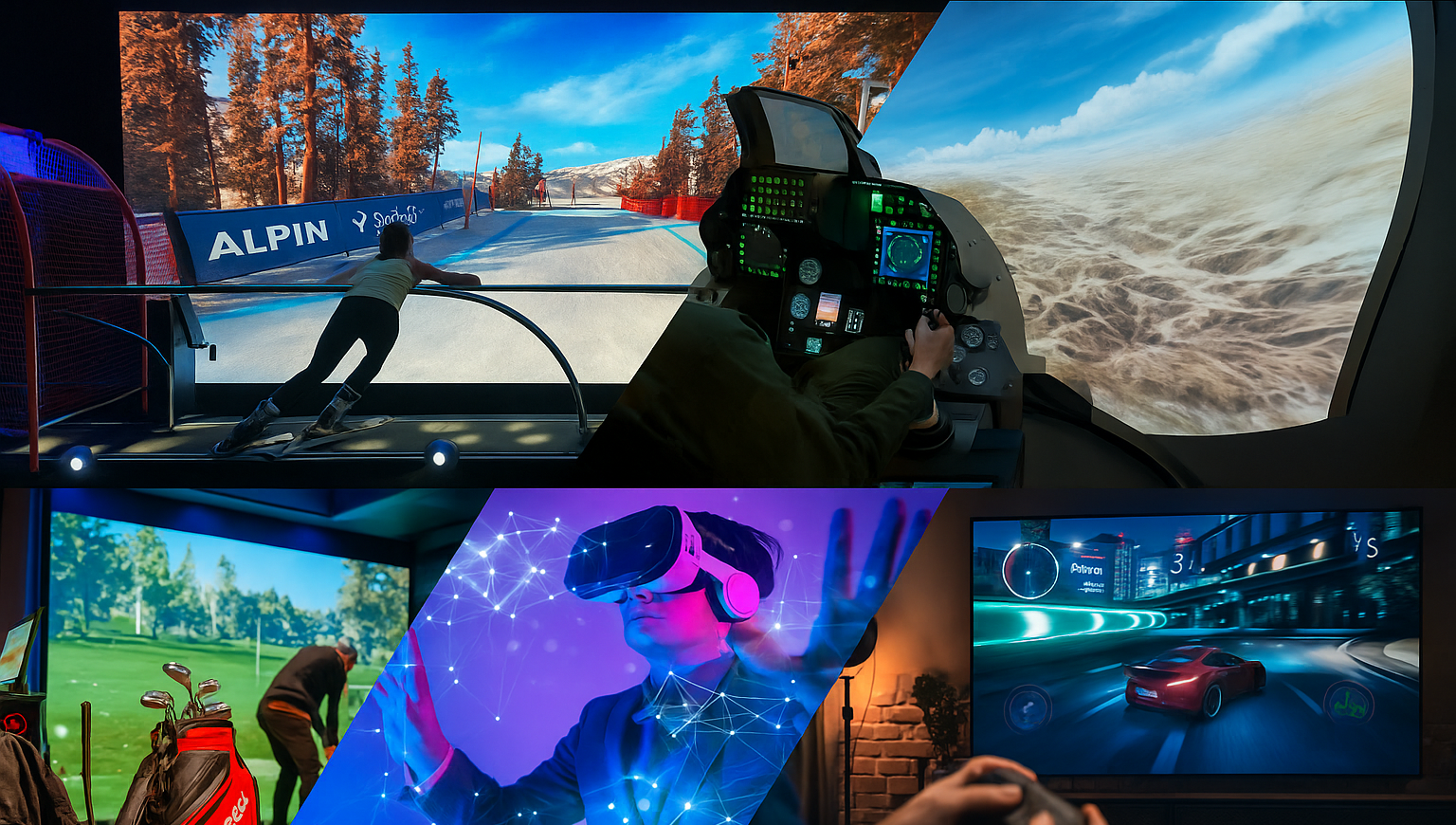A Changing Game
For most of its history, golf has been viewed as a traditional pastime. It carried with it the image of sprawling courses, early morning tee times, exclusive memberships, and afternoons spent under the sun. For many, that ritual was part of the charm. But for others, the barriers of time, cost, and accessibility kept them away. Today, golf is undergoing a transformation, and at the heart of this change is technology. Indoor golf simulators are reshaping how people approach the game, and in doing so, they are attracting entirely new groups of players—particularly women and Gen Z.
The Rise of Indoor Golf
Indoor golf was once a niche activity, mostly confined to professional training or specialized lounges in big cities. Over the last decade, though, it has exploded in popularity. Much of this growth is tied to advances in simulation technology. High-speed cameras, infrared sensors, and sophisticated software now make it possible to replicate the feel of playing on world-renowned courses from the comfort of an indoor space.
At the same time, the cultural appeal of golf has shifted. What was once seen as a time-intensive commitment is now being reframed as something flexible, social, and tech-driven. Indoor golf fits seamlessly into modern lifestyles, offering the ability to practice, compete, or simply unwind—without dedicating half a day to the sport.
Why Women Are Embracing It
One of the most exciting shifts in golf today is the rising number of women discovering the sport, and indoor golf has played a pivotal role in that growth. Traditional golf can feel intimidating to new players. Long-established clubs often came with unspoken rules and barriers that didn’t always feel welcoming. By contrast, indoor golf provides an approachable entry point.
For many women, simulators offer the freedom to practice in private or in small groups, with immediate feedback on every swing. Instead of guessing what went wrong, players can see precise data on launch angles, spin rates, and ball trajectories. This feedback accelerates learning and builds confidence faster than endless trips to a driving range.
Just as importantly, indoor golf has become a social outlet. Modern simulator lounges often resemble upscale bars or entertainment centers more than country clubs. Groups of friends gather for casual rounds, league nights, or simply a fun evening out. Golf becomes not just a sport but a shared experience, blending competition and connection in equal measure.
Why Gen Z Is Leading the Charge
If women represent one wave of change in golf, Gen Z is the other. For this younger generation, technology isn’t an add-on—it’s an expectation. They grew up in a world of smartphones, streaming, and gaming. Indoor golf aligns perfectly with their appetite for experiences that merge sport, entertainment, and technology.
Rather than seeing golf as a long, quiet round on a course, Gen Z players experience it as something dynamic and customizable. They love the gamification built into simulators: challenges, competitions, leaderboards, and social sharing features. Instead of taking half a day to complete 18 holes, they can play a quick match in under an hour. That speed and efficiency matter, especially to a generation balancing school, work, and social life.
Social media also plays a role. For many young players, an indoor golf lounge is as much a content opportunity as it is a sporting one. Sharing highlights, funny moments, or challenges on TikTok or Instagram makes the game more visible and appealing to peers who may never have considered picking up a club.
The Social Experience Redefined
What both women and Gen Z share is a desire for golf that fits their lives. Indoor golf isn’t about replacing the traditional course—it’s about offering an alternative. It’s about being able to play in the middle of winter, squeezing in practice between meetings, or gathering friends for an evening that combines sport with entertainment.
The social experience is central. Couples use simulators for date nights. Companies book simulator venues for team-building events. Friends organize league nights where the competition is real but the atmosphere is relaxed. Golf, once viewed as an individual pursuit or an elite hobby, is being reimagined as a group activity that thrives in a variety of contexts.
Technology at the Core
None of this would be possible without the advancements in simulator technology. TruSimPlay simulators, for example, use high-speed tracking systems and realistic 3D rendering to replicate iconic courses with breathtaking accuracy. Every swing produces measurable results: ball speed, spin, trajectory, and club path. This isn’t just entertainment—it’s data-driven improvement.
For newcomers, that precision makes the game easier to learn. For experienced players, it’s a way to sharpen skills without the constraints of weather or time. The blend of authenticity and accessibility ensures that simulators appeal to a broad range of players, from hobbyists to professionals.
Time: The Ultimate Luxury
Perhaps the most important factor behind the surge in indoor golf is time. In today’s world, time is the one commodity people guard most carefully. Traditional golf, while rewarding, often requires half a day to enjoy properly. For many, that simply doesn’t fit into busy schedules. Indoor golf solves that problem. Players can complete a round in an hour, practice for 30 minutes, or enjoy a quick challenge with friends before dinner.
This flexibility ensures that golf is no longer a sport reserved for weekends or retirees. It adapts to the pace of modern life, making it appealing to a wider, younger, and more diverse audience.
Looking Ahead
The growth of indoor golf shows no signs of slowing. As technology becomes more advanced and accessible, we can expect to see more simulator lounges in urban and suburban areas, more leagues designed for casual competition, and more crossover between indoor training and outdoor play. Women and Gen Z will continue to shape this future, pushing golf into new spaces and redefining what it means to enjoy the game.
Closing Thoughts
Indoor golf represents more than just a new way to swing a club. It represents a shift in how golf is perceived and who feels invited to play. By combining technology, convenience, and social appeal, simulators are making golf faster, more engaging, and more compatible with modern life. Women and Gen Z aren’t just adopting this trend—they’re leading it.
👉 Whether you’re curious about starting golf or looking for a way to play more often, TruSimPlay's indoor golf simulators make it easy to bring the game into your lifestyle.






Share:
Track Replication Tech in Racing Sims – Why Every Curve Matters
How to Pick the Ideal Golf Simulator Enclosure Size